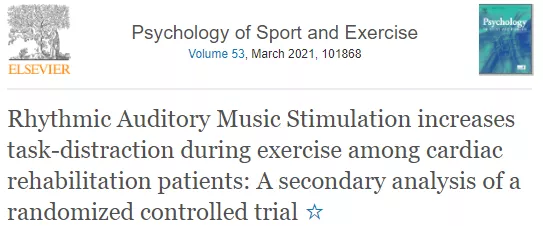
Japanese writer Haruki Murakami once said: If I hadn’t been so obsessed with music, I might not be a novelist. A nice melody can not only give the brain an “electric shock” inspiration, but also hit the heart directly and get emotional resonance.
Life is inseparable from music. In medicine, music also has magical powers, and “healing” the heart is one of the benefits. Some abnormal electrical signals of the heart can even be expressed in simulation by rhythm.

Music rhythm can simulate irregular heartbeat
In all the organs of the body, the heart and music seem to be more closely connected. Only in terms of physical characteristics, they all have a beating rhythm.
The normal rhythm of the heartbeat is stable and uniform. If the heartbeat is abnormal, it will break the balance of the heartbeat interval. At this time, the clever beats and musical terminology in the music happen to play a role in helping people identify the abnormal rhythms that can only be heard by a stethoscope.
Elaine Chew, a professor at Queen Mary University of London, has been working on digital media, and she is also a pianist. She led a team to compose music based on the analysis of the heartbeat rhythm of patients with arrhythmia.
Researchers transform the collected ECG data into music information, rewrite the heart rate rhythm of patients with arrhythmia, and convey the sound of music expressing heart rhythm. for example:
Arrhythmia: Brubeck’s Turkish Blue Rondo music clip can just simulate the rhythmic characteristics of arrhythmia in the electrocardiogram. Because the music has a 2:4:3 rhythm, which is similar to the beating characteristics of premature heart beats.
Atrial fibrillation: Piazzolla’s “Big Tango” shows the irregular rhythm of atrial fibrillation under the mixing effect.
These interesting music attempts not only make ordinary people feel the symptoms of arrhythmia, but also give doctors some new enlightenment.
How does music “heal” the heart?
In addition to the benefits of music being integrated into medical treatment, it also brings many direct benefits to the heart and other organs.
Enhance athletic ability and promote blood supply to the heart
Earlier this year, a cardiologist from the University of Toronto Teaching Hospital in Canada published a study in the internationally renowned journal Psychology of Sport and Exercise that music can divert patients’ attention from the pain of rehabilitation exercise. This also explains Why can people persist in longer and higher intensity exercises in music?

Help relieve pain and anxiety after cardiac surgery
In the 2 to 3 days after heart surgery, pain is usually caused by the ineffectiveness of the anesthetic. The Erasmus University Medical Center in the Netherlands analyzed 20 targeted studies and found that listening to music after surgery can significantly reduce the patient’s anxiety index and pain, and this effect can last up to 8 days after surgery.
A 7-year follow-up study published by the University of Belgrade in Serbia showed that listening to music for 30 minutes a day can reduce chest pain and anxiety after myocardial infarction, and listening to ordinary people can also stabilize the heart condition.
Reduce the heart rate of patients with hypertension
A study published in Scientific Reports, a sub-issue of Nature magazine, showed that patients with high blood pressure after taking antihypertensive drugs. Compared with people who do not listen to music, those who listen to classical music for 1 hour will have blood pressure and heart rate drop to a lower level.

The researchers analyzed that it may be that music activates the human body’s parasympathetic nervous system, which helps lower blood pressure and slow down the heart rate.
The cardiologist pointed out that these benefits may stem from 3 factors:
First, the sympathetic nervous system has a wide range of activities, which can promote motor function to adapt to changes in the environment. For example, the heartbeat will increase during exercise and music will offset the activity of the sympathetic nervous system.
Second, music can help regulate people’s emotions, improve concentration, and promote positive changes in the brain to improve physical functions.
Third, conditioning is one of the advanced functions of the human brain, and different music beats will trigger different heart rates. Studies have found that music with a more intense melody can make people nervous and heartbeat faster, while light music with a beautiful melody can make people calm their heart and lower their heart rate.

4 kinds of moments, each with a recommended melody
There are many types of music, the rhythm ranges from soothing to bright, and the emotional color ranges from graceful to majestic. If you use music to regulate your body and mind, it is best to “tailor-made”.
While driving
Listen to some slow music
Narrow lanes, dim light, and closed tunnels that are not visible at a glance often make people nervous. Studies have found that accidents in tunnels are far fewer than those on open roads, but they are more serious.
The experiment compared the slow-paced music Canon, fast-paced music Croatian Rhapsody, police siren and female safety warnings, and found that when listening to fast-paced songs, the driver drives the fastest; when listening to soothing music, the driver’s speed slows down significantly , Which shows that the driver feels more relaxed and has less mental stress.
Get up earlier
Listen to soothing music
Compared to listening to the news in the morning, listening to music can help you ease your stress and increase your confidence in coping with the tedious work of the day.
Researchers from the School of Media and Communication at RMIT University in Australia have found that listening to some soothing, sweet music after getting up not only makes people more awake, but also maintains a happy mental state.
During exercise
Listening to uplifting music
Although it can secrete dopamine during exercise, it makes people happier, but if you want to stick to it for a long time, you might as well cooperate with music.
From the perspective of exercise physiology, the average pace during running is 150 to 190 steps/minute, and the heart rate is 75 to 95 beats/minute.
Researchers at the University of British Columbia at Okanagan in Canada found that listening to exciting concerts during exercise reduced physical fatigue. At the same time, it can also reduce the bad feelings of rapid heartbeat and muscle soreness, even for people who don’t usually exercise.
When dating
Listen to romantic music
A joint study by the University of Granada in Spain and the University of La Frontera in Chile has shown that listening to romantic songs will change the body temperature, and if the relationship is good, it will deepen the emotions.
It was found that when couples who had been together for less than 6 months heard romantic songs, their bodies would cool down, especially in the tips of the nose, cheeks, forehead, and fingertips.
For couples with a very stable relationship and higher satisfaction, hearing romantic songs will heat up the above body parts. The closer the relationship, the faster the temperature rises.
What needs to be reminded is that for the elderly, music with too strong rhythm and emotional expression, as well as music with too high decibels and too high voice should be avoided, which may increase the burden on the heart and blood pressure.
Comments